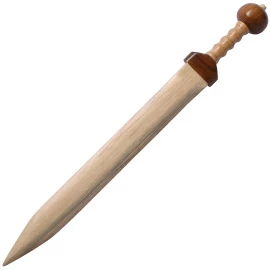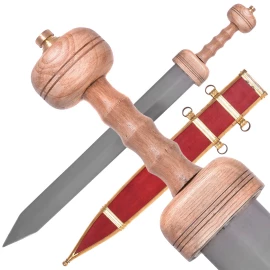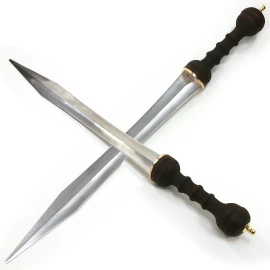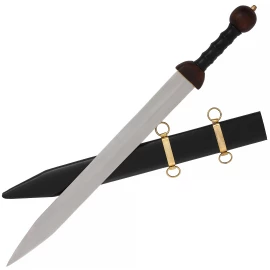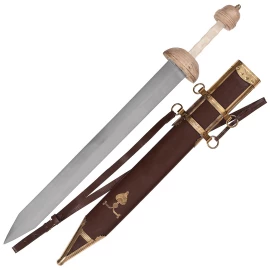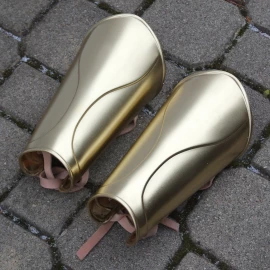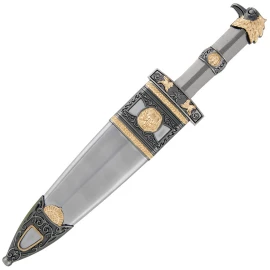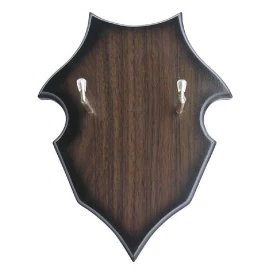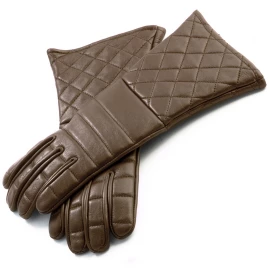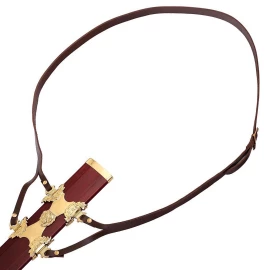Pompeii Gladius, Roman Sword with Sheath
The gladius, the primary weapon of the Roman legions, was used in many variations from the 4th century BC to the 3rd century AD. The Pompeii-type gladius is one of the latest versions of the Roman short sword. It was named by modern historians after the Italian archaeological site where the four canonical examples (dated to before 79 AD, the year of the devastating volcanic eruption of the Vesuvius which buried the city under several metres of ash) were found. The Pompeii gladius' shorter and broader double-edged blade facilitated close-quarters combat. Featuring straight, parallel cutting edges and a triangular tip, these gladii were primarily designed as thrusting/stabbing weapons, could however still be quite effective at cutting or slashing. More information...
Notify me when the item is in stock.
We will inform you as soon as we stock up.
Pompeii Gladius, Roman Sword with Sheath
- Material: EN45 high carbon steel blade, bone grip, wooden guard and pommel, brass top nut and guard inlay
- Overall length: approx. 68.8cm
- Blade length: approx. 48.8cm
- Blade width: approx. 5cm
- Handle length: approx. 20cm (grip approx. 9cm)
- Weight (without scabbard): approx. 710 g
- Incl. scabbard with wooden core, genuine stitched leather cover and brass fittings
- Specs may slightly vary from piece to piece.
Made as historically accurate as possible, the sword offered here is a reconstruction of an ornate, yet classically styled Pompeii gladius. It features an unsharpened, full-tang blade hand-forged from high carbon steel. The grip is crafted from bone and facetted for a secure grip. It is flanked by an oval guard and a spherical pommel, both made of solid wood with hand-carved designs. The sword tang is secured to the pommel with a top nut made of brass. A brass guard-plate inlaid into the wood of the guard is covered with a small piece of felt to cushion the contact between the hilt and the scabbard. This tab is however easy to remove if you prefer to reveal the brass inset.
The beautiful and ornate scabbard is a real highlight. Made of wood bound in burgundy leather, it is adorned with brass mounts modeled after archaeological finds. While the chape's design (V-shaped, with narrow horizontal band and half-round button finial) is - though handsome - quite unostentatious, the locket is, in contrast, elaborately decorated with tin-plated details. Each of the two iconographic plates fitted on the observe side of the throat shows cut-out/pierced and engraved motifs of a helmeted figure in full regalia. The upper panel represents a warrior on foot, standing between two standards, while the lower panel portrays a similar warrior on a two-horse chariot or biga. Two pairs of cast brass carrying rings on either side of the scabbard's locket allow the bearer to carry his gladius in true Roman fashion.
As this Pompeii-style gladius has blunt edges but a sharp point, it is not recommended for contact re-enactment (combat) but rather for living history. Combined with authentic garments and armour, this beautifully designed sword is the perfect costume piece for any legionary of higher-rank. But, aside from re-enactment purposes, it is also a fantastic collectible and display item for any Roman history enthusiast.
Write to our specialist


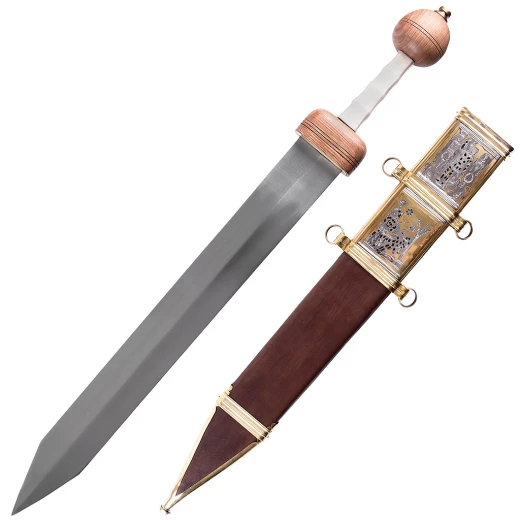

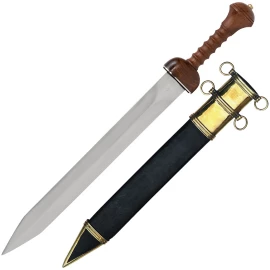
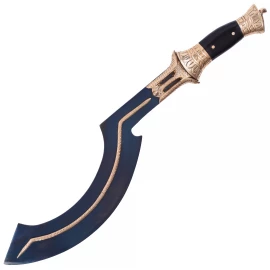
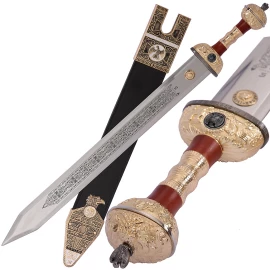

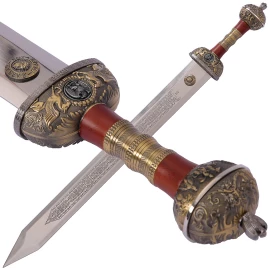
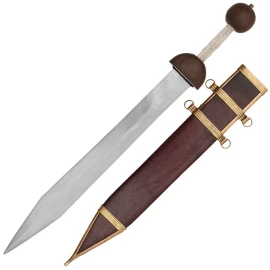
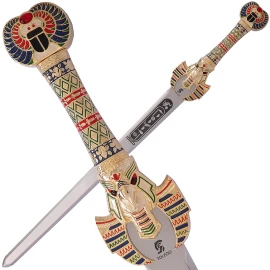
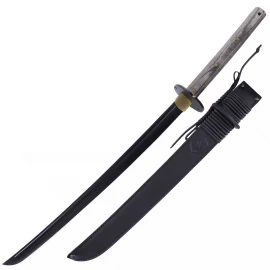
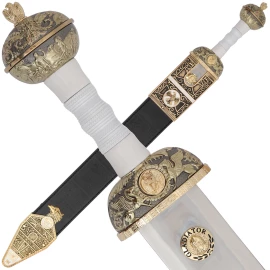
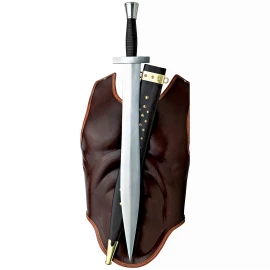
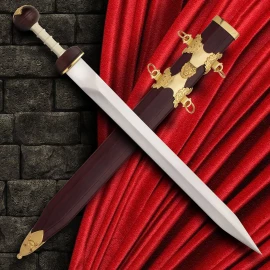
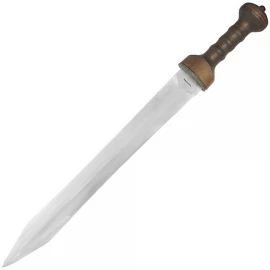
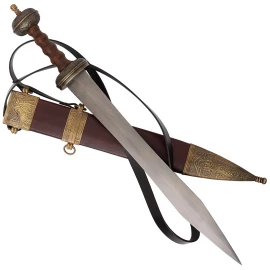
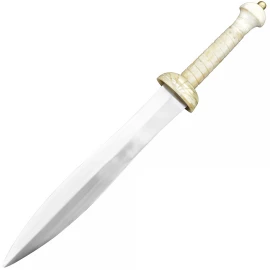
.2152382459.1706739645.JPG.webp)
